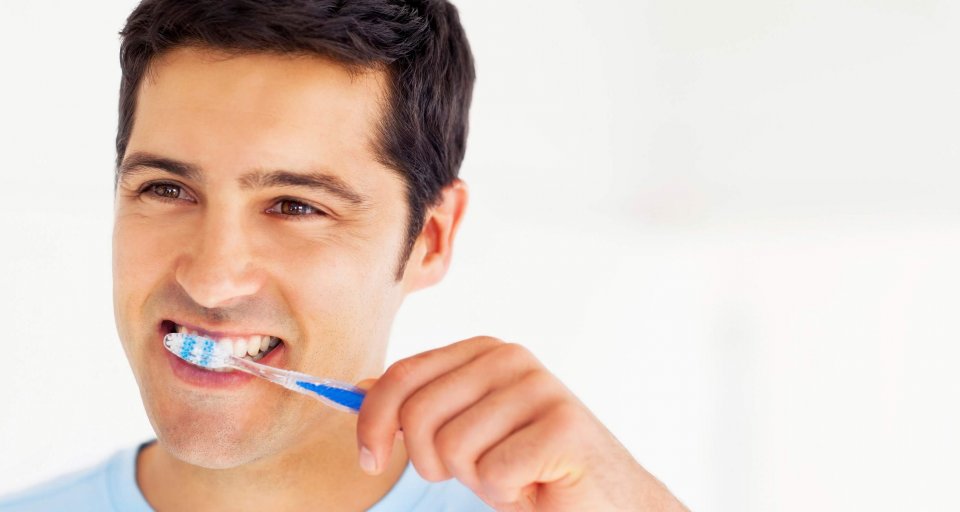We’re all adults here; we know how to brush our teeth. I mean, right? For many of us, brushing our teeth is like doing laundry. We know enough to get by.As far as knowing what the optimal water temperature is for certain materials, what wash and rinse cycle are best and how to treat grass stains versus wine stains, that can be a little intimidating. We often fill up the washing machine, add some laundry detergent and hope the garment comes out looking cleaner than it did going in.
Stop to think for a second how you brush your teeth. Do you brush your teeth in circles, back-and-forth or in an up and down motion? What kind of toothbrush and toothpaste do you use? How long do you brush for and how often? Do you floss daily? We’ll get into all this and more below so that you know the best way to care for your teeth.
Proper brushing techniques
Brushing your teeth is a huge part of proper oral hygiene. Whether you prefer a manual or electric toothbrush, here’s a look at proper brushing techniques as recommended by the American Dental Association (ADA).
- Use a soft-bristled toothbrush. You may feel like you’re getting a deeper clean with a medium- or hard-bristled toothbrush, but most dental professionals agree that it’s not necessary. Be sure to brush gently, as well. You’re cleaning your teeth, not scrubbing tile.
- Bigger isn’t always better. The size of the toothbrush you choose depends on the size of your mouth. Get a toothbrush that fits comfortably in your mouth and allows you to reach all areas easily.
- Left, right, left. Use short back and forth strokes to brush all sides of your teeth. You can use up and down strokes to brush behind your teeth.
- A 45-degree angle is best. Don’t put your toothbrush flush against your gums. Instead, hold your toothbrush at a 45-degree angle for optimal cleaning, comfort, and control.
- Be fluoride fresh.Fluoride can help remove plaque, prevent tooth decay and strengthen the enamel. Look for fluoride toothpaste that has the ADA seal of approval on its packaging. You can find a list of all ADA-approved oral care products here.
- Twice as nice. Using your soft-bristled toothbrush and fluoride toothpaste, brush for two minutes morning and night. Be sure to brush your tongue too. Bacteria collect on it causing bad breath.
- Stay flossing. Flossing daily is a must. Not just after you eat corn on the cob. Plaque and debris can build up between your teeth that your toothbrush can’t reach and leaving it there can cause decay and bad breath, so be sure to floss between each tooth once a day.
- Don’t overdo it. Brushing too frequently or too hard can lead to what is known as tooth abrasion. Over-brushing your teeth can lead to gum recession, tooth sensitivity and enamel erosion to name a few problems, all of which can be costly and painful to help restore.
How often should I replace my toothbrush?
It may sound frequent, but you should replace your toothbrush every 3 to 4 months or when it shows signs of wear, whichever comes first. If the bristles on your toothbrush are frayed or sticking out in every direction like a bad case of bed head, throw the toothbrush out. You could end up doing damage to your gums by continuing to use a worn toothbrush, plus you aren’t getting as effective of a cleaning from it.
Get a dental checkup
You didn’t think we were going to let you off the hook that easily, right? Even if you brush and floss diligently, you still need to visit the dentist for a routine dental checkup.There could still be things going on, like gum disease, that aren’t visible to you that your dentist can detect and treat.
Dental checkups are covered at 100%
If you haven’t been to the dentist in a while, get it on the books. Dental checkups are covered at 100% on most dental insurance plans, so “waiting until payday” isn’t an excuse. If you don’t have dental insurance, you still aren’t off the hook. You just need to sign up for a dental savings plan.
What’s a dental savings plan?
Glad you asked. A dental savings plan is an easy-to-use, flexible and affordable alternative to dental insurance that works like a warehouse membership. You pay an annual membership fee, which starts around $80, for access to savings on most dental procedures. There are more than 100,000 dentists who take part in dental savings plans, so finding a dentist in your area shouldn’t be a problem.
How to brush my teeth
Now that you know a little more about how to properly brush and care for your teeth, put these tips into effect today and get a dental checkup scheduled. An ounce of prevention can go a long way.


